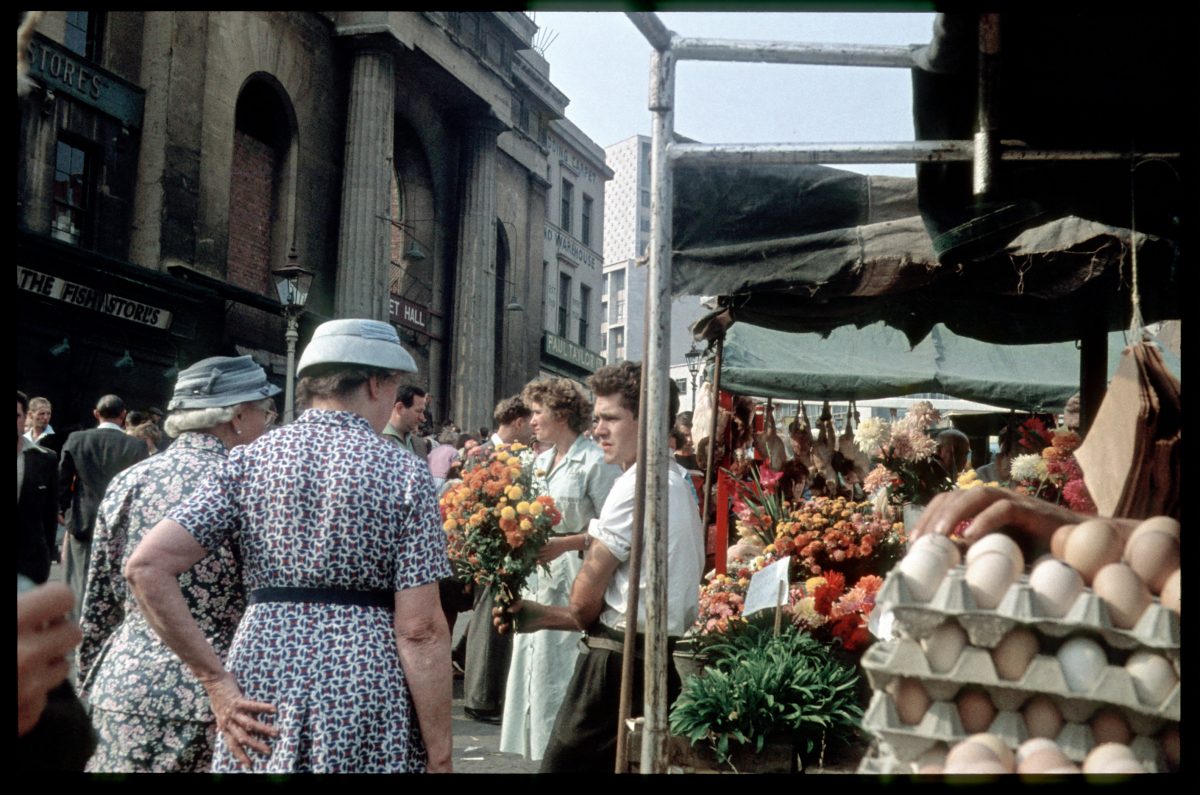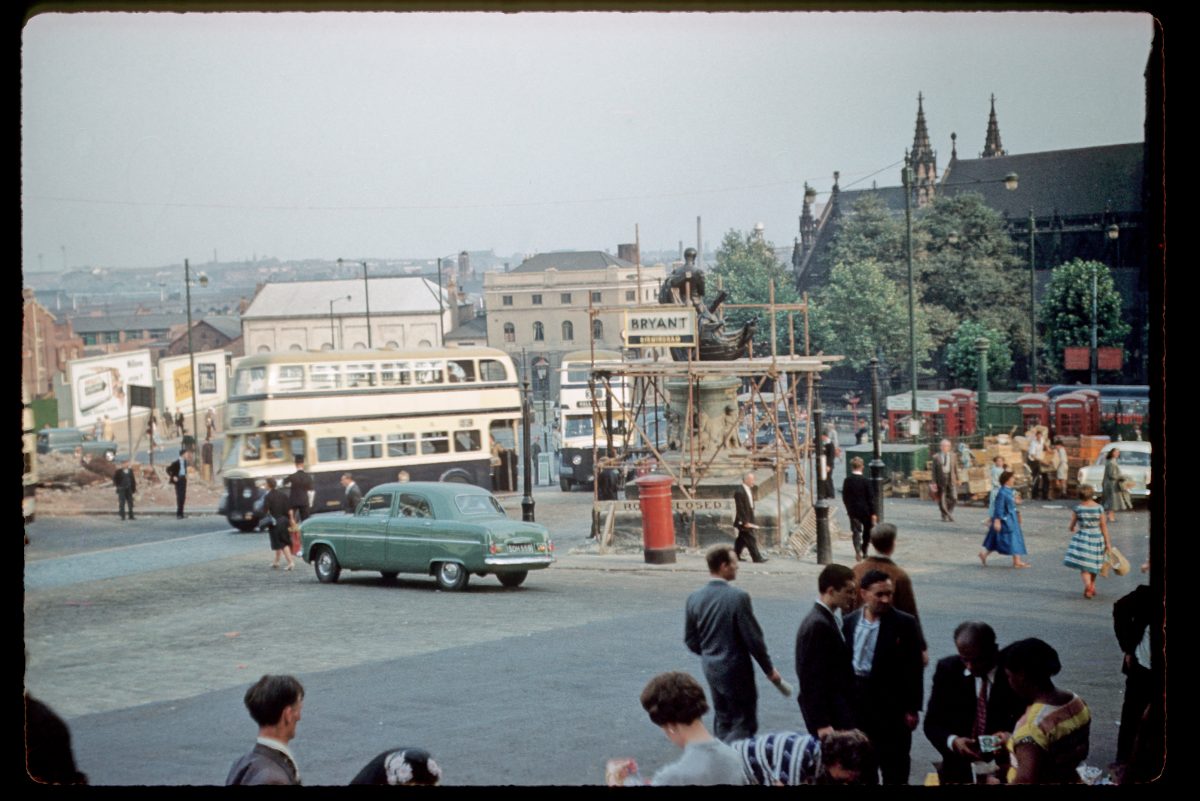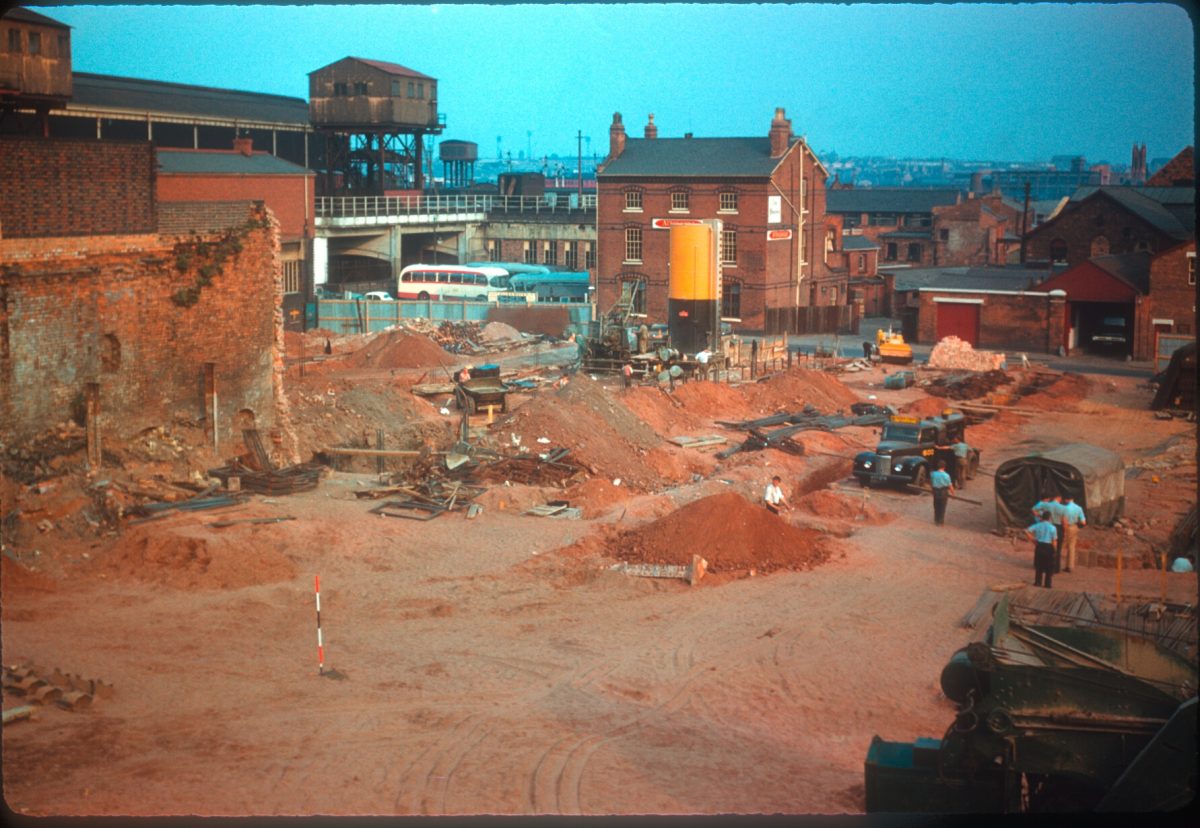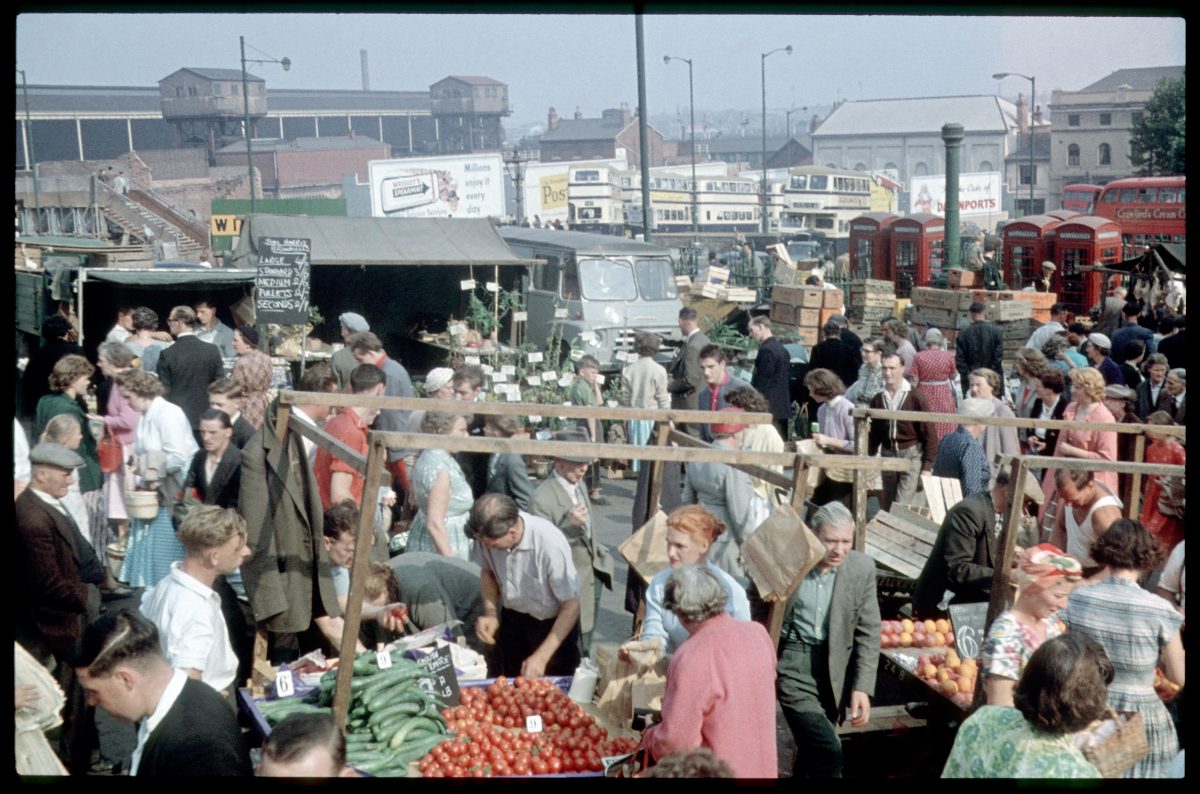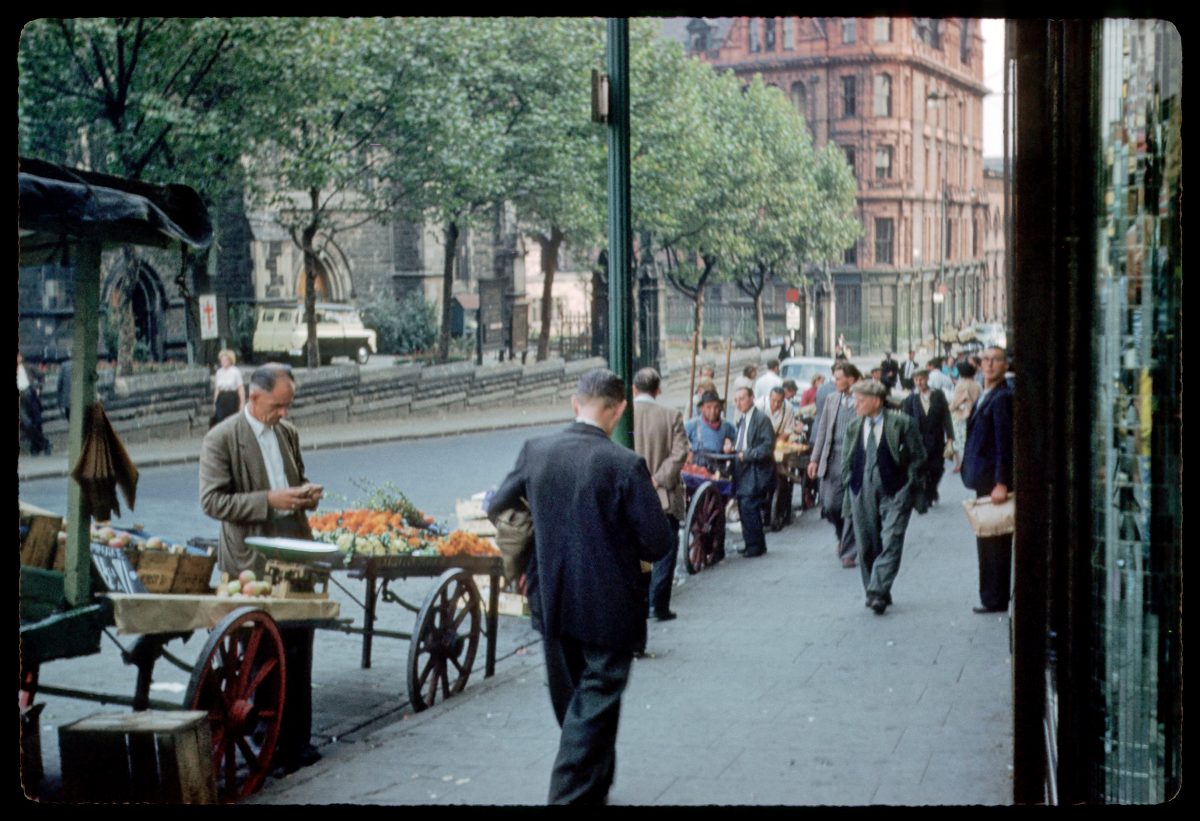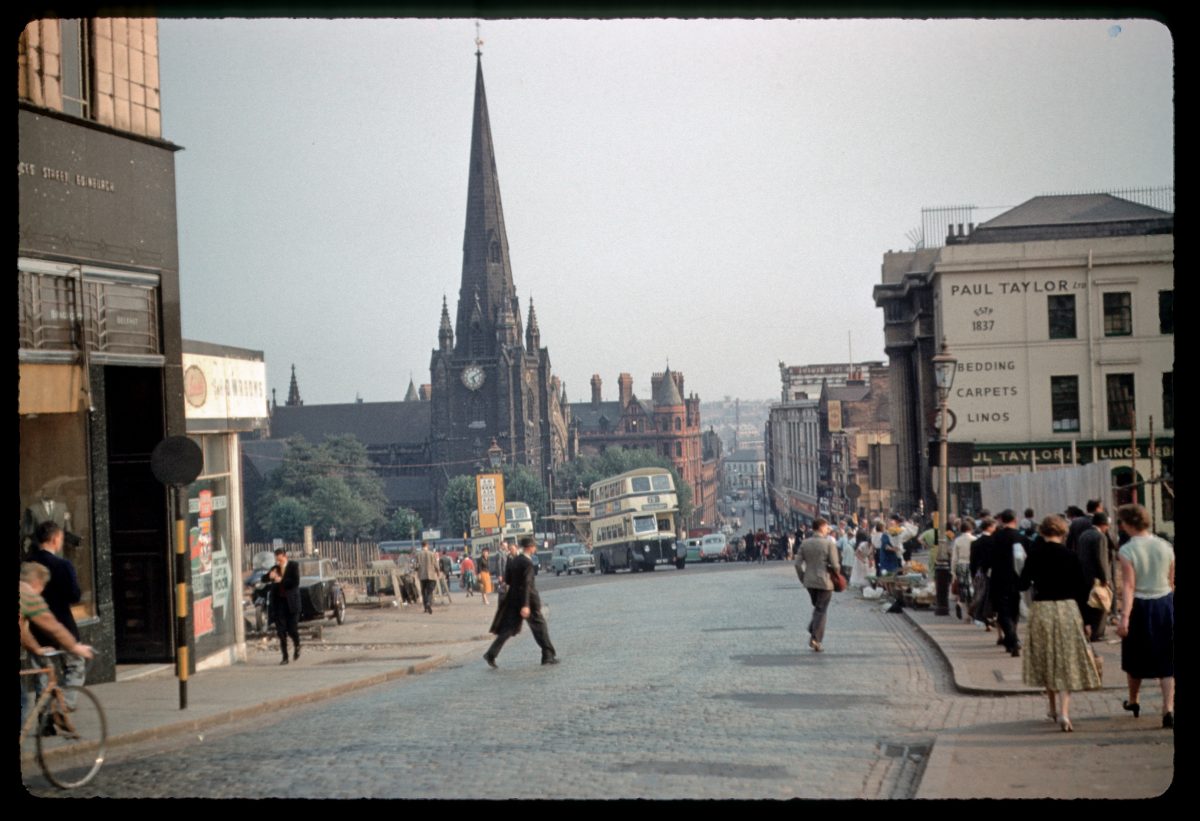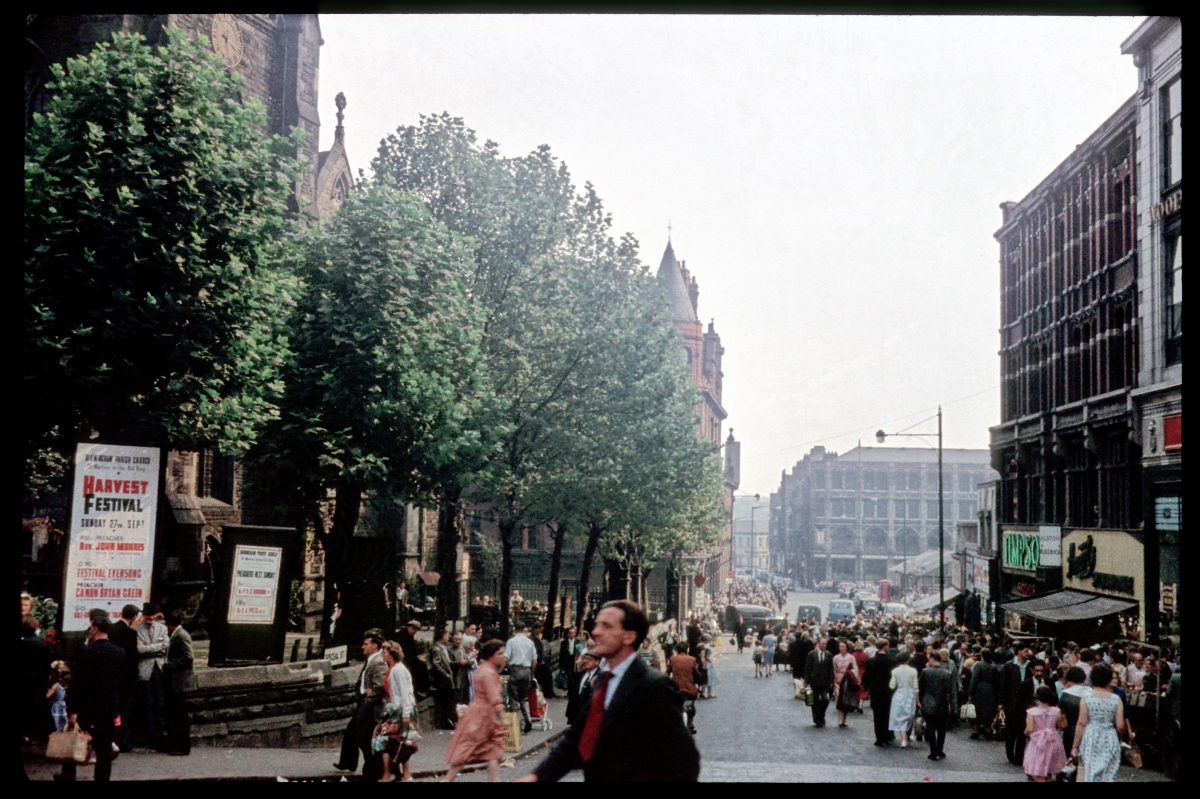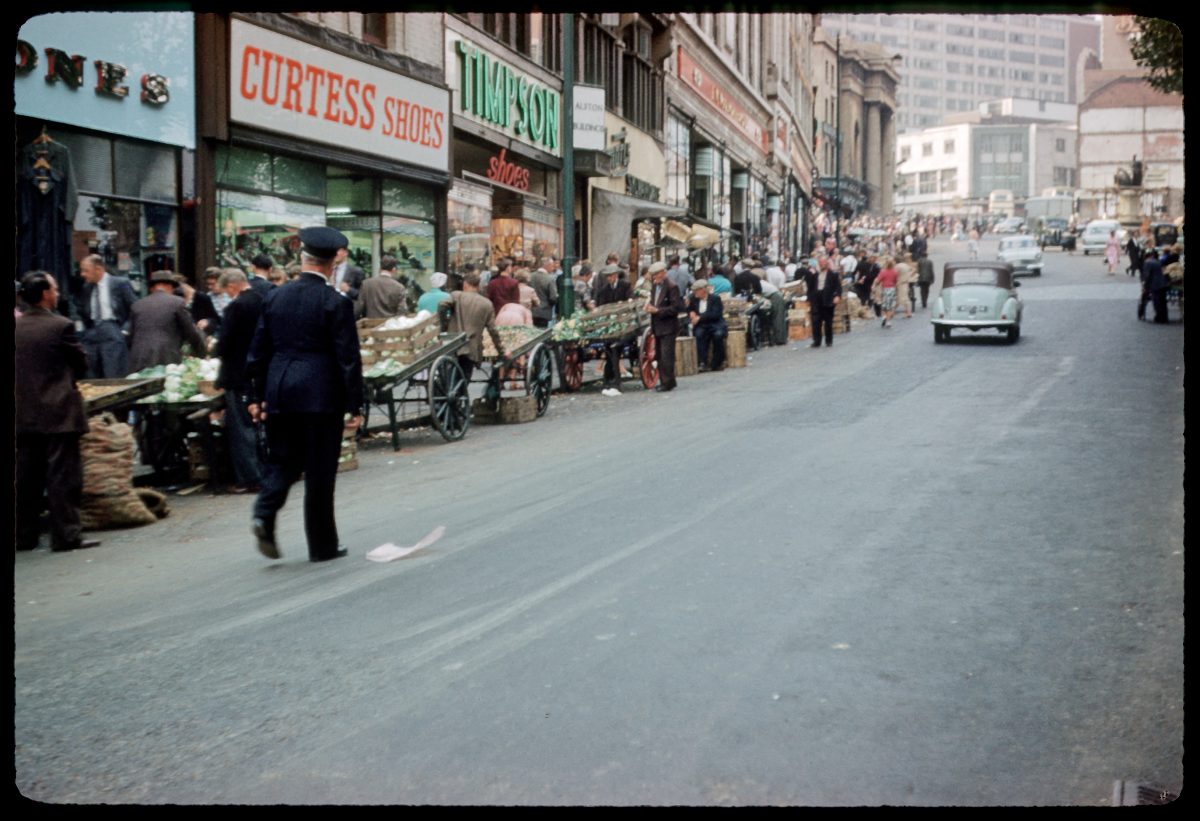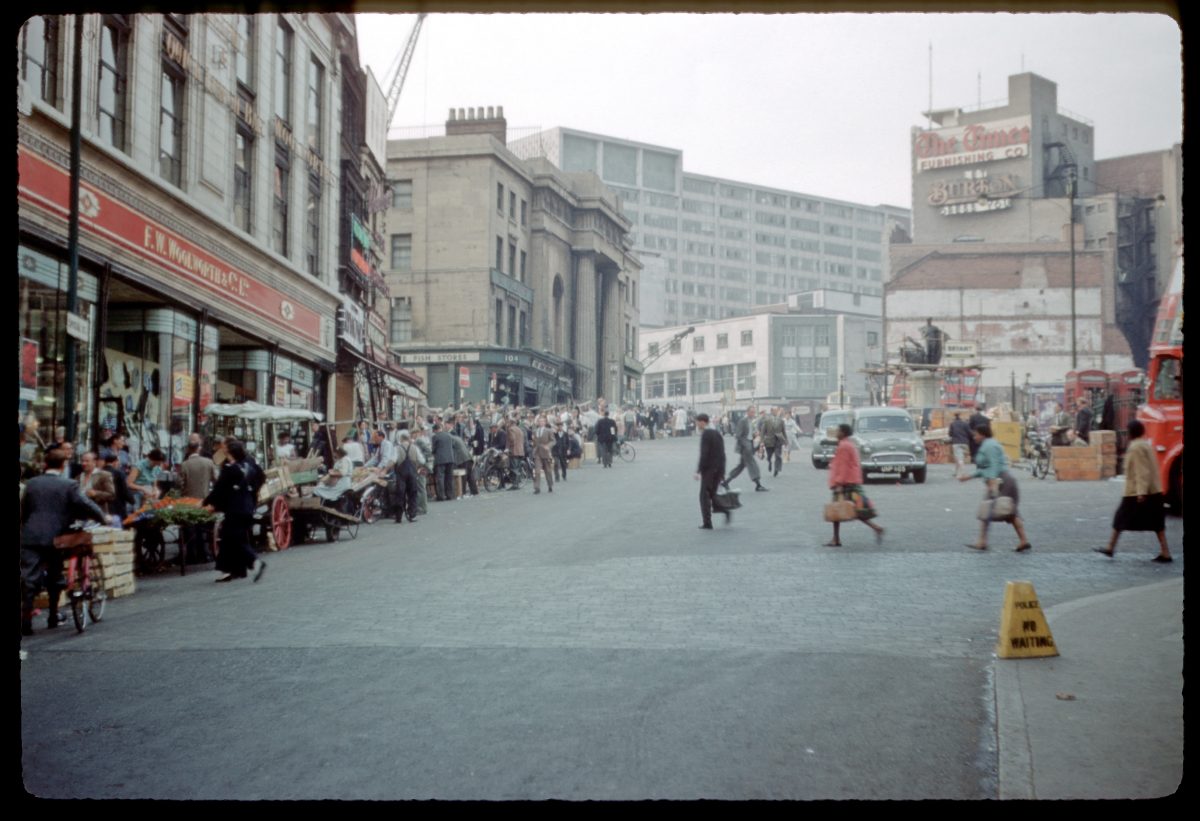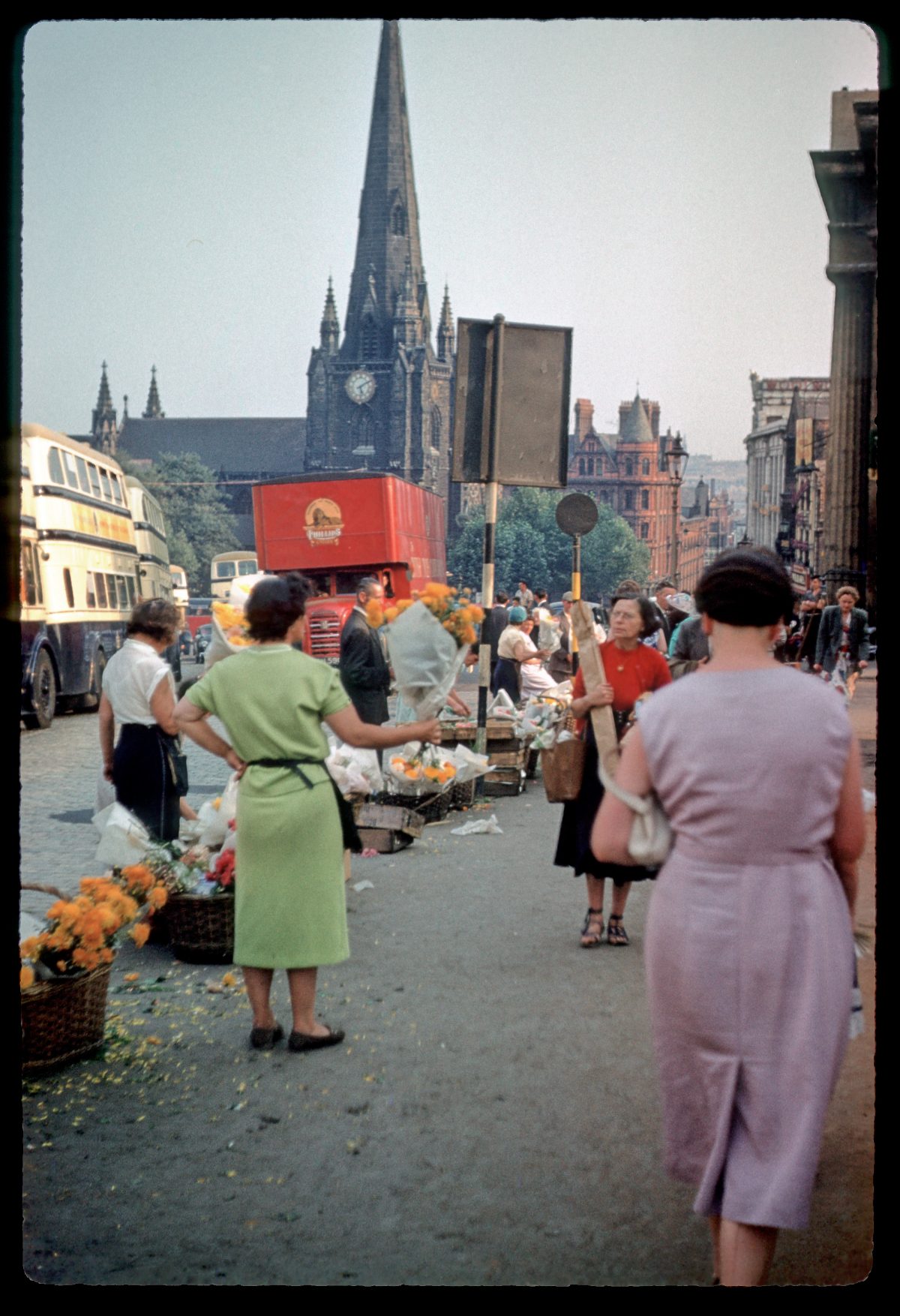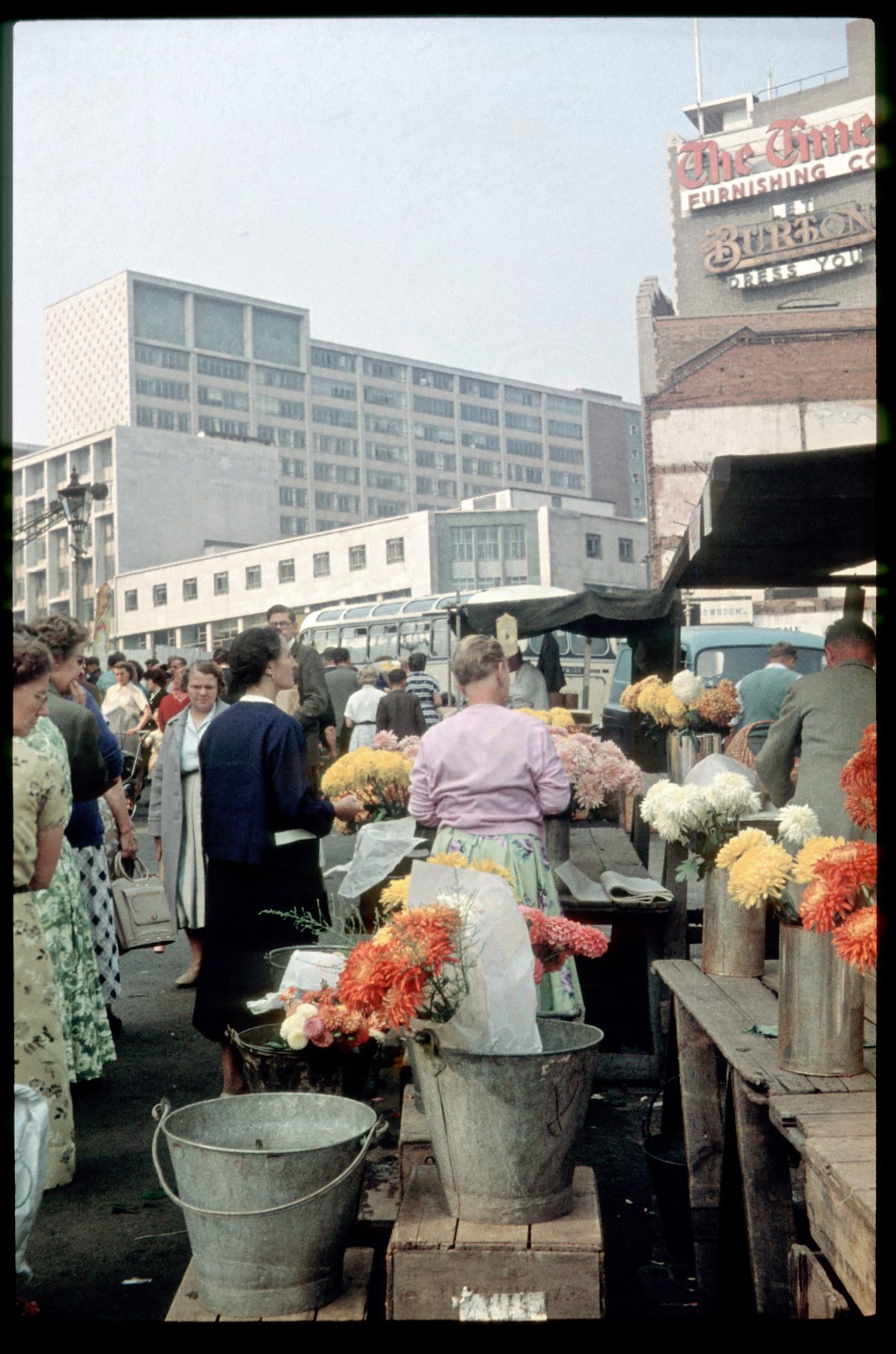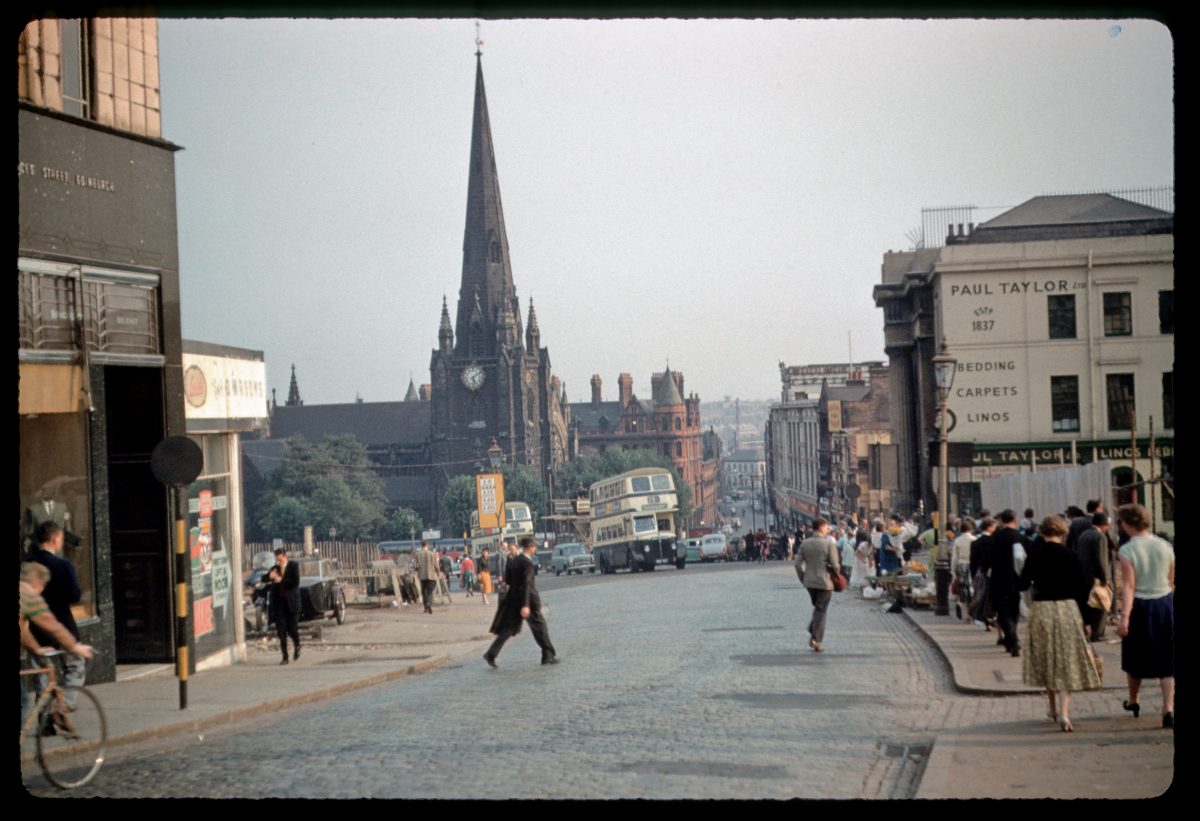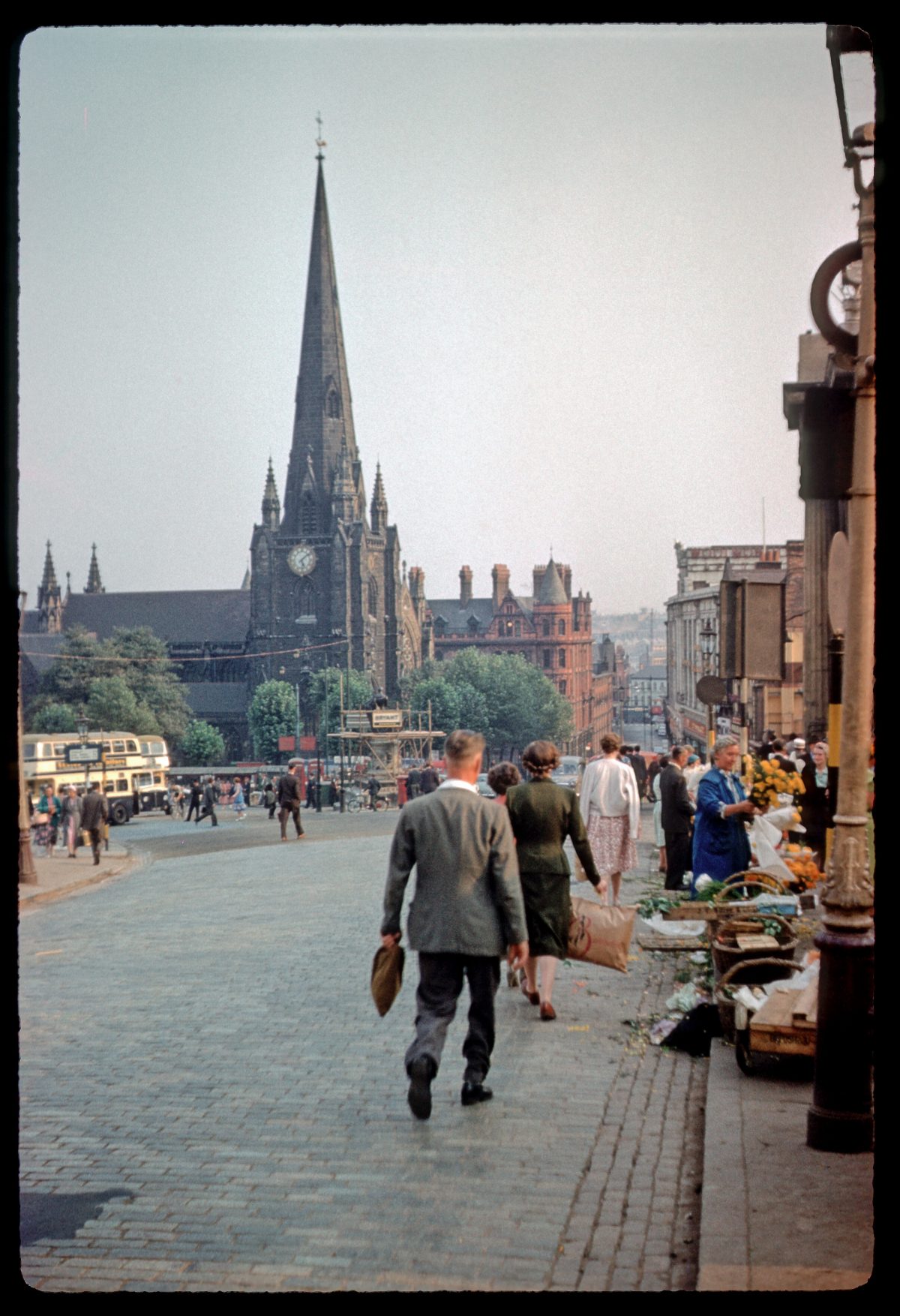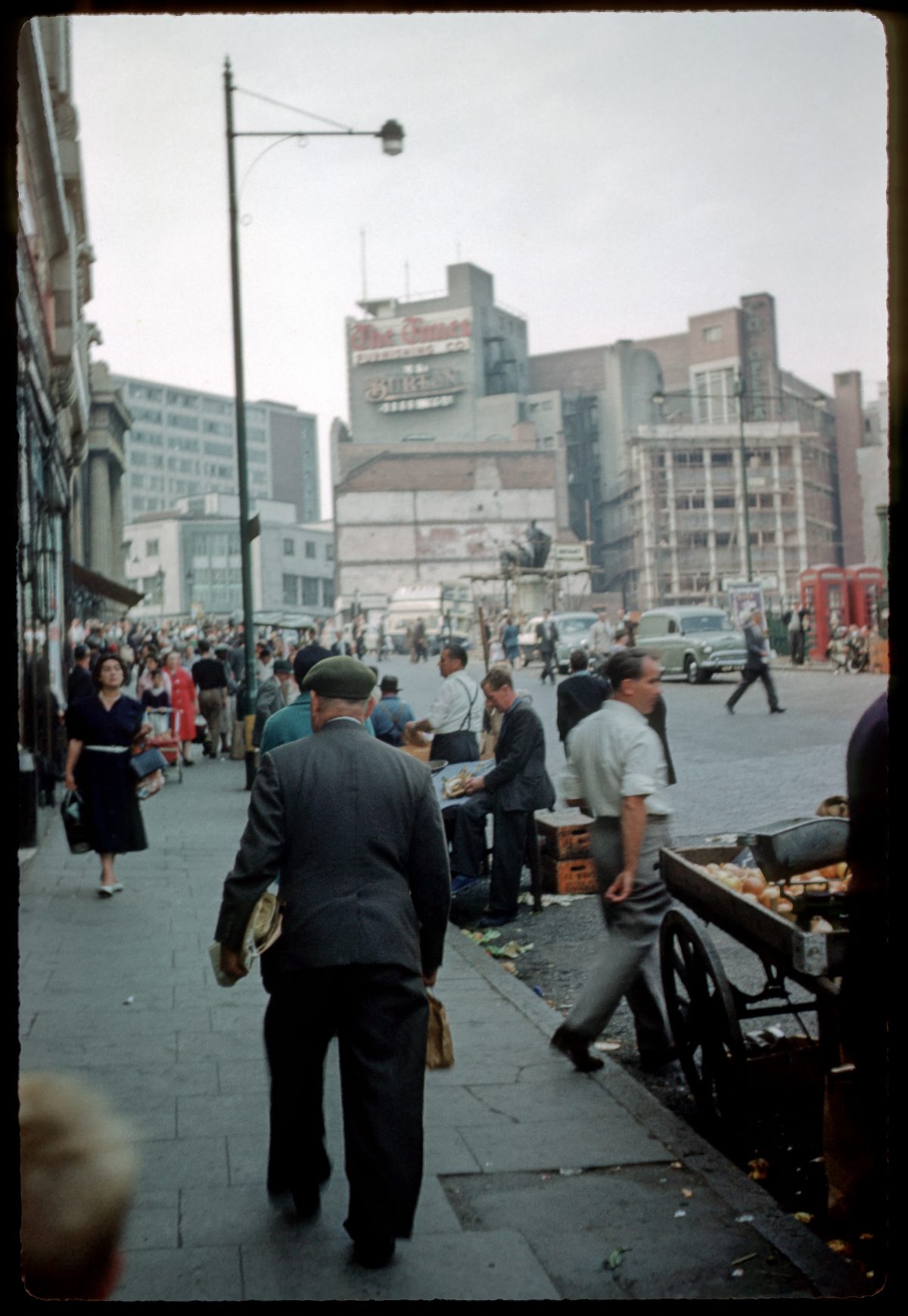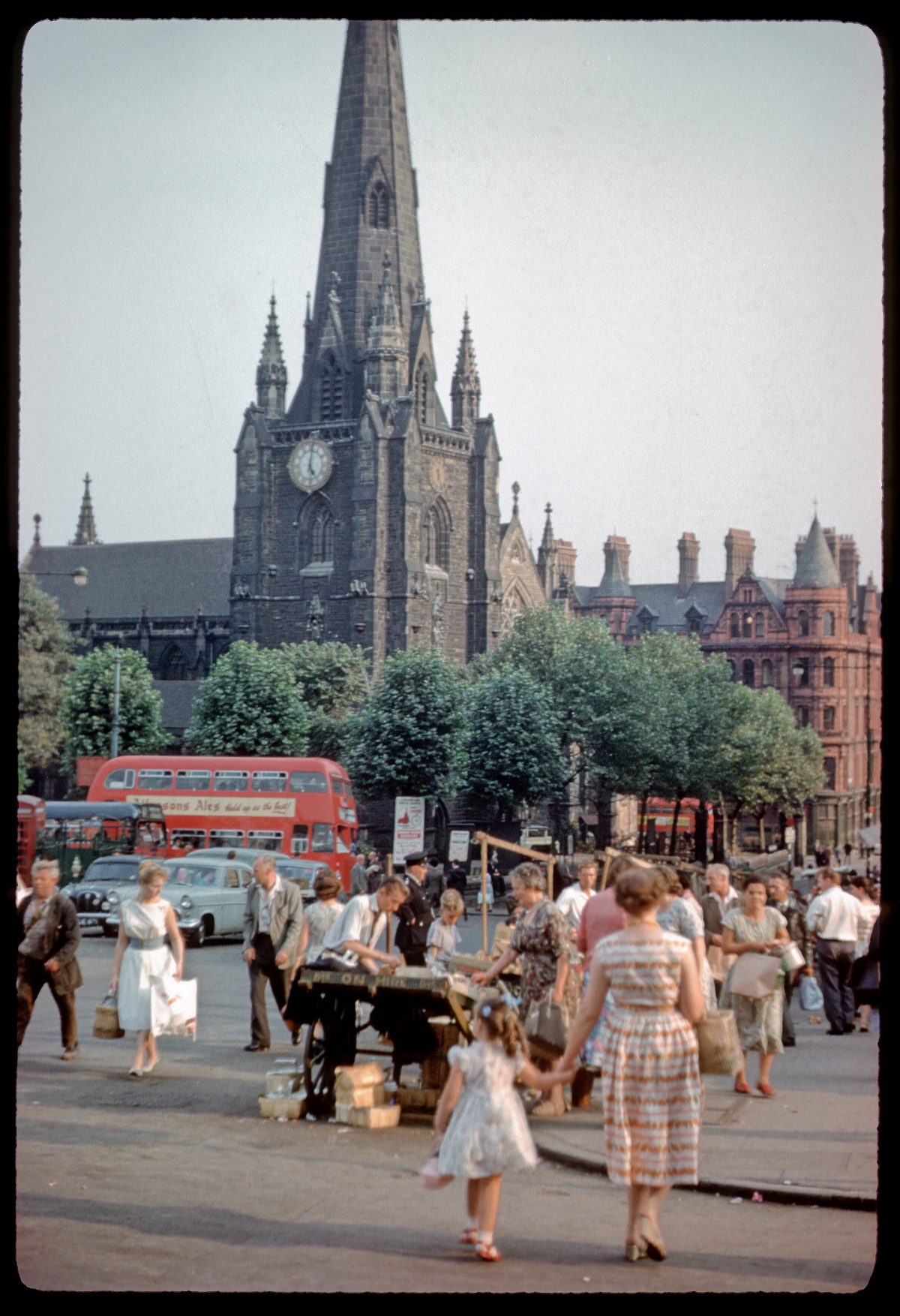Colour slides of the old Bull Ring market, Birmingham, England, taken on September 11 1959. The last day for street trading was September, 12th 1959. The photographs were taken by Phyllis Nicklin (1913-1969), who was a University of Birmingham geography teacher. She made these colour slides as lecture aids for her lectures on the geography of Birmingham.
The BBC:
In the 16th century a man called John Cooper was given the right to bait bulls at a site opposite St Martins Church, this became known as the Bull Ring.
Birmingham was first given the right to hold a market in 1166…Most of the market people were gathered close to the church walls and in Spiceal Street. Although not named today this still runs from the inner ring road..
By the early 19th century the area around St. Martins had become crowded with old buildings, narrow streets and traders stalls.
It was decide to open up the area by knocking down the buildings on the east side of Spiceal Street and on the west side of the Bull Ring… That great triangle of space with St. Martins as its base, gathered all the outdoor traders of Birmingham.
From 1809 the Bull Ring was made more distinctive by the first statue of Lord Nelson to be put up in Britain, and by the 1830’s a magnificent market hall overlooked the barrow boys and other dealers. The original Market Hall, with room for 600 stalls and an ornamental fountain, was built in 1835, again designed by Charles Edge, the man who finished the Town Hall.
In 1940 it was gutted after being hit by a German incendiary bomb. It was still in use although roofless until the redevelopment of Birmingham swept it away in the early 1960s.
Work began to redevelop the Bullring in 1961, and eight million pounds later the new Bull Ring opened by the Duke of Edinburgh in May 1964.
Linked by escalators and stairs was a 23 acre air-conditioned shopping centre and 350,000 feet of retail trading area. It was meant to be the ultimate shopping experience,and was declared to be the biggest indoor shopping mall outside the USA, but many said the feel of the old market had been lost.
Alderman Frank Price saw the future: “Twenty years from now the future citizens of Birmingham will look back on this period of their city’s history and will say: ‘This was Birmingham’s finest and most courageous period.’” In 2000, the bulldozers arrived to clear the brutalist structures that had replaced the open market.
